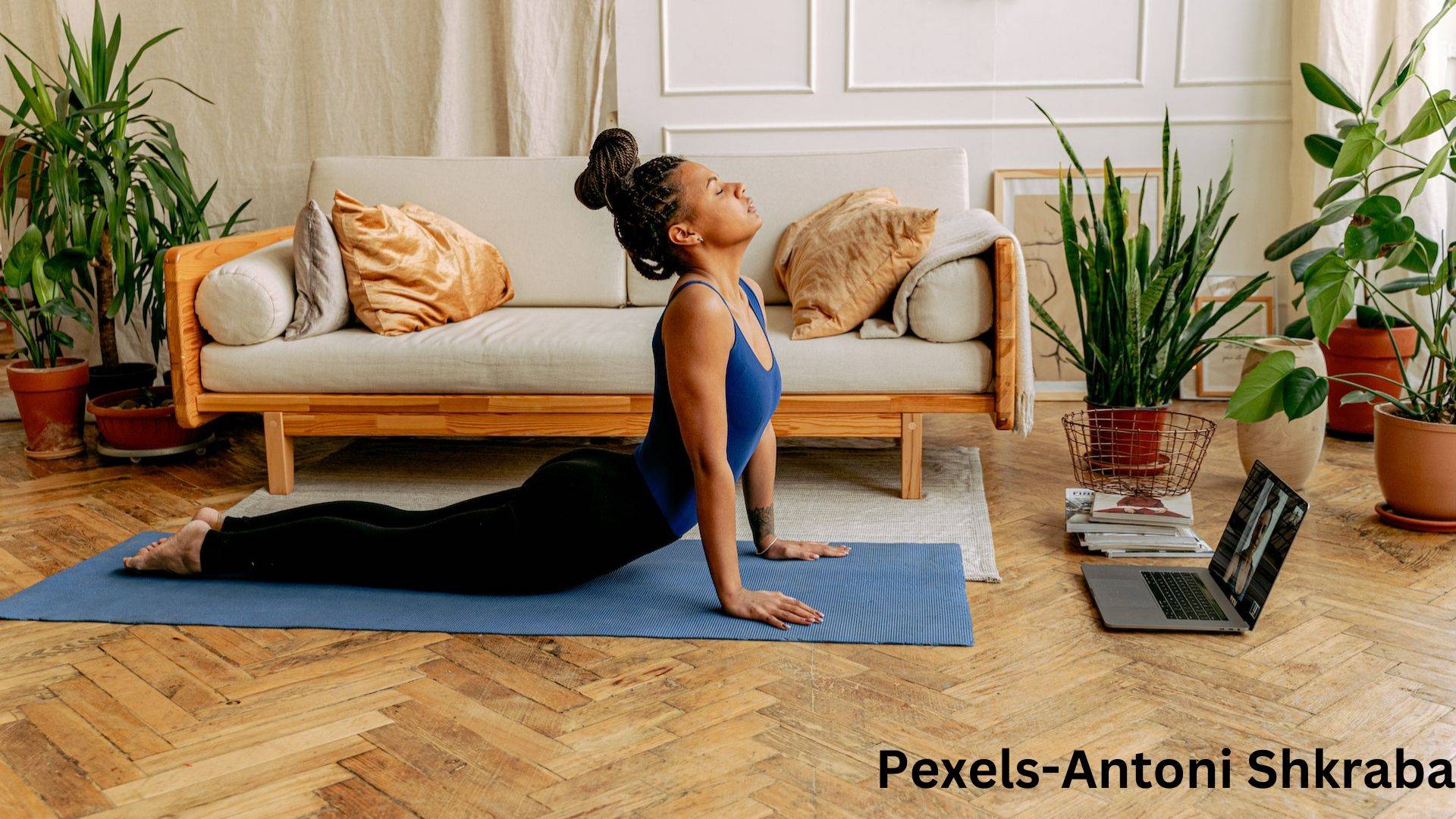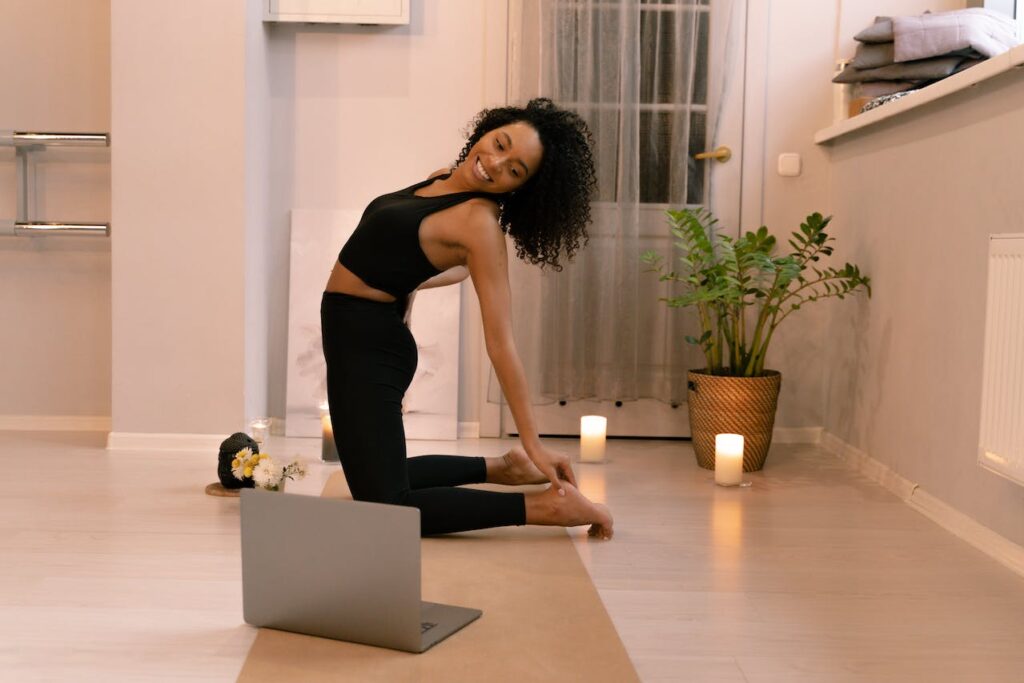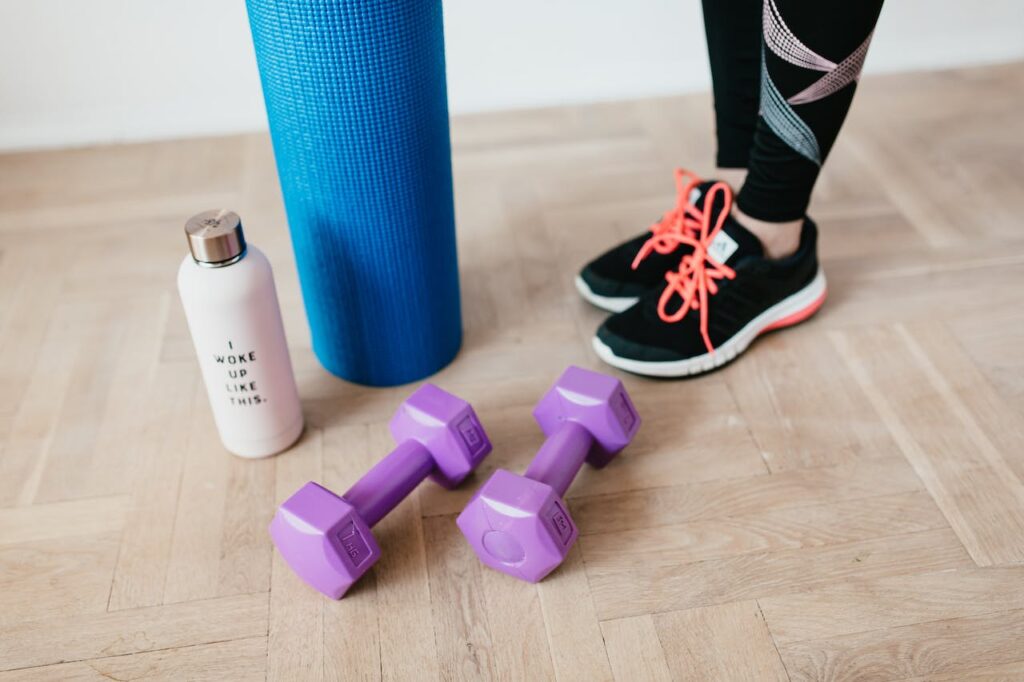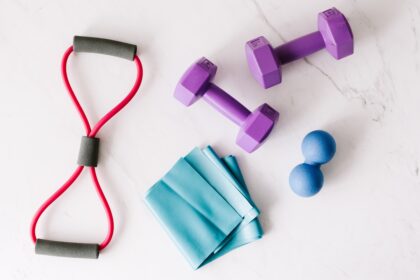This post may contain affiliate links, and Sweet Lyfe Daily may earn a small commission from purchases made through link at no additional cost to you. As an Amazon Associate Partner, Sweet Lyfe Daily may earn a commission from qualifying purchases. Please do your own research before making any purchases. Please click to read our full Disclaimer. Thank you for your support.
Table of Contents
Dear Sweet Friends,
In recent years, the popularity of home workouts has skyrocketed, and for good reason. They offer convenience, flexibility, and the ability to exercise in the comfort of your own space. Whether you’re looking to shed a few pounds, build muscle, or simply stay active, building a home workout routine as a beginner is an excellent way to kick-start your fitness journey. This guide will walk you through the process of creating an effective and budget-friendly home workout routine, including tips on equipment, space requirements, and online resources for guidance.
Why Home Workouts Suit My Fitness Journey
Being a passionate advocate for health and deeply committed to both personal well-being and the promotion of physical fitness, I still encounter my fair share of exercise challenges. My guiding principle is that exercise should never feel like a burdensome task; it should be enjoyable and invigorating. However, it’s important to acknowledge that not all workouts fall into that enjoyable category, yet they remain an essential part of a holistic wellness routine. As someone who occasionally finds it challenging to start my exercise routine and isn’t particularly fond of the gym environment, I’ve consistently turned to home workouts as my preferred fitness solution.
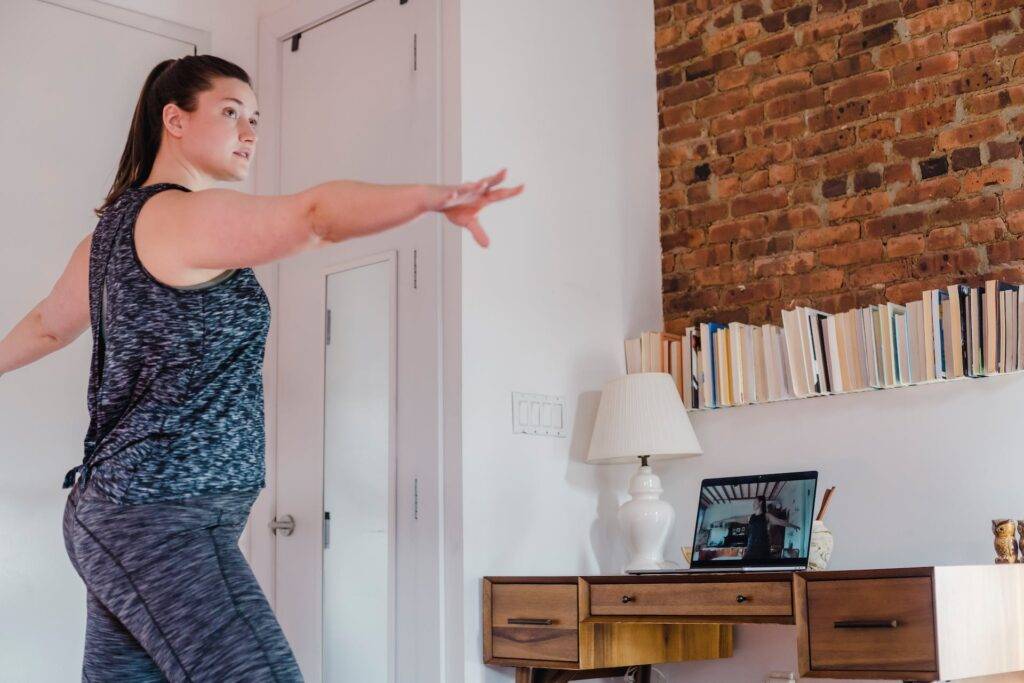
Why Choose Home Workouts?
Before we delve into the specifics of creating an effective home workout routine for beginners, it’s crucial to recognize the compelling reasons why home workouts have become an attractive option:
- Convenience: Home workouts eliminate the need to commute to a gym, saving you valuable time and money. Say goodbye to rush-hour traffic and waiting for machines during peak hours.
- Flexibility: With home workouts, you have the freedom to exercise whenever it best fits your schedule. Whether you prefer an early morning sweat session, a midday break, or a late-night workout, the choice is entirely yours.
- Privacy: For some individuals, the gym environment can be intimidating, especially when embarking on a new fitness journey. Exercising at home provides the privacy and comfort needed to build confidence and work on your goals without feeling self-conscious.
- Budget-Friendly: Building a home workout routine is often a more cost-effective option in the long run compared to pricey gym memberships or fitness classes. You can tailor your equipment and resources to suit your budget and preferences.
Now that we’ve highlighted the numerous advantages of home workouts, let’s discuss the practical steps of creating a personalized and effective fitness routine within the comfort of your own space.
1. Assess Your Goals and Fitness Level
As you embark on the journey of creating your home workout routine, the first crucial step is to clarify your objectives. What are you aiming to achieve through exercise? Whether your goal is shedding excess weight, enhancing your physical strength, improving flexibility, or maintaining an active lifestyle, having a clear understanding of your aspirations will guide your fitness journey.
Furthermore, it’s imperative to conduct an honest assessment of your current fitness level. If you’re starting from scratch as a complete beginner, it’s advisable to begin with exercises that cater to your novice status. Also consider seeking a health care practitioner to assist you in your workout plan. Avoid the temptation to tackle advanced workouts right away, as this could lead to overexertion and potential injuries. Instead, build a strong foundation through beginner-friendly exercises, allowing your body to adapt and progress steadily.
2. Determine Your Workout Space
Creating a dedicated workout space is a pivotal aspect of establishing your home workout routine. Fortunately, you don’t need an expansive home gym to get started; a modest corner in your living room, bedroom, or even a cleared-out section of your garage will suffice. When selecting your workout area, ensure that it provides enough room for you to move comfortably during your exercise sessions. Adequate space allows you to perform exercises safely and without hindrance. Moreover, consider adding a mirror to your workout area; it serves as a valuable tool for checking your form and ensuring you’re executing exercises correctly. This visual feedback can help prevent injuries and maximize the effectiveness of your workouts.
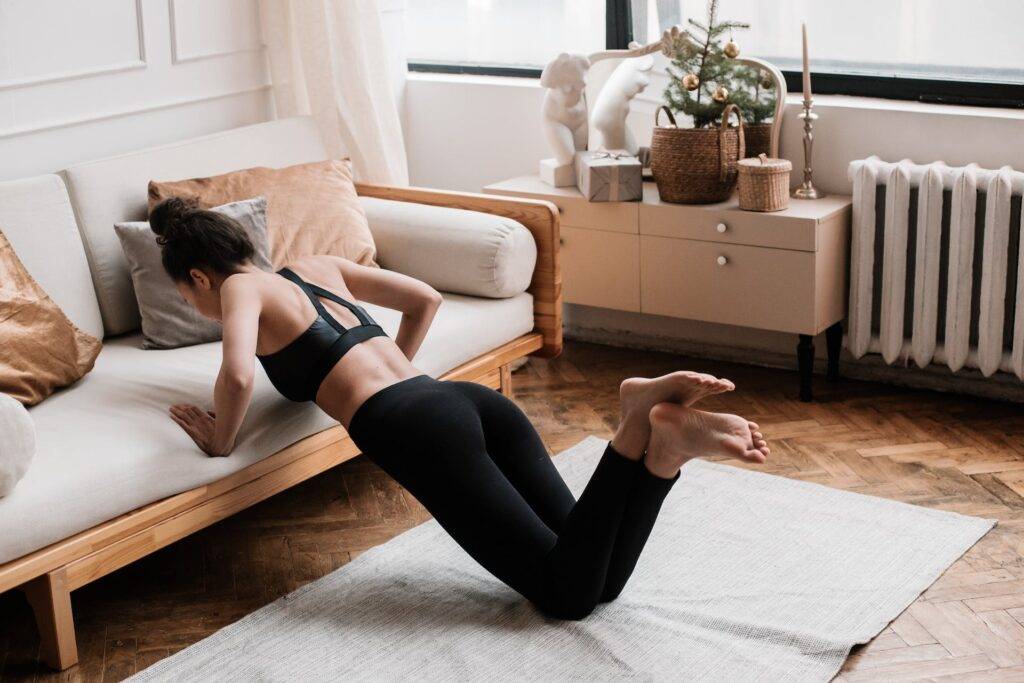
3. Select Your Equipment (If Necessary)
One of the fantastic aspects of home workouts is their adaptability to minimal or no equipment. However, if you’re looking to diversify your routine or challenge yourself further, consider these cost-effective options for enhancing your workout experience:
- Resistance Bands: These versatile bands are fantastic for both strength training and flexibility exercises. They come in various resistance levels to suit your fitness level.
- Dumbbells: Opt for adjustable dumbbells or a set with different weights to accommodate a wide range of exercises. Dumbbells are excellent for building muscle and increasing the intensity of your workouts.
- Yoga Mat: A comfortable, cushioned yoga mat is essential for floor exercises, stretching, and yoga sessions. It provides a stable and hygienic surface for your workouts.
- Stability Ball: Incorporating a stability ball into your routine can elevate your core workouts and improve balance. It’s a versatile tool for targeting multiple muscle groups.
- Jump Rope: This simple yet effective tool is an excellent addition for cardiovascular workouts. Jumping rope is a fun way to boost your heart rate and burn calories.
Remember that you can always begin with body-weight exercises, which are highly effective for building strength and improving your form. Gradually introducing equipment as you progress allows you to develop a strong foundation while maintaining proper technique. Ultimately, the choice of equipment should align with your fitness goals and preferences.
4. Plan Your Routine
Your home workout routine should include a mix of cardiovascular exercises, strength training, flexibility work, and rest days. Here’s a basic template you can use if you are a beginner or restarting your exercise routine:
Day 1: Cardiovascular Workout
- Warm-up: Begin with 5-10 minutes of dynamic stretching (movement-based stretching that you don’t hold) or gentle jogging in place to prepare your body for exercise.
- Cardiovascular exercise: Choose from options such as modified jumping jacks, seated high knees, or a brisk walk around your living space. If you have access to outdoor areas, consider a walk or run. Always adapt exercises as needed.
- Cool-down: Dedicate 5-10 minutes to static stretching (stretches that you hold for 20-30 seconds) to help your body recover.
Day 2: Strength Training
- Exercises: Perform body-weight squats, wall-assisted push-ups, planks (which can also be done on an incline using a chair), and lunges with chair support.
- Sets and Repetitions: Aim for 2-3 sets of 8-10 repetitions for each exercise. Modify the numbers based on your comfort and fitness level.
- Rest: Allow 30-60 seconds of rest between sets.
- Cool-down: Conclude your session with 5-10 minutes of static stretching to maintain flexibility.
Day 3: Rest or Active Recovery
- Engage in light activities such as a leisurely walk, calming yoga session, or gentle stretching to aid in muscle recovery.
Day 4: Cardiovascular Workout
- Repeat a cardiovascular routine similar to Day 1.
Day 5: Strength Training
- Follow the strength training routine from Day 2, adapting as needed.
Day 6: Flexibility and Stretching
- Focus on enhancing your flexibility and reducing muscle tension with stretching exercises like yoga or Pilates.
Day 7: Rest or Active Recovery
- Take a day off from structured workouts to let your body rejuvenate. Engage in gentle activities or rest as needed.
Please note that this is merely a sample plan. Feel free to customize the exercises, intensity, and rest days to align with your personal preferences and fitness objectives. In the initial week, consider starting with just 1 or 2 workout days and progressively increase your weekly schedule as your stamina and strength improve. What truly matters is taking that first step, staying consistent, and allowing your body the rest it deserves to prevent over-training and promote overall well-being.
5. Find Online Resources
The internet is a goldmine of free workout resources designed to cater to beginners. Take a look at these options:
- YouTube: YouTube is a treasure trove of fitness expertise. Numerous fitness experts and certified trainers share a wealth of workout videos suitable for individuals of all fitness levels. You can easily find beginner-specific workouts and follow along with skilled instructors. Plus, don’t forget that you have the flexibility to adapt these workouts to your own comfort and pace.
- Fitness Apps: A wide array of fitness apps are at your fingertips, each offering guided workouts, progress tracking, and personalized fitness plans tailored to your specific goals. These apps are a convenient and effective way to stay on top of your fitness journey.
- Online Communities: Connect with like-minded individuals on their fitness journey by joining fitness forums or social media groups. These online communities provide a platform for sharing experiences, seeking advice, and gaining inspiration from others who share your fitness goals.
- Fitness Websites: Several dedicated websites are chock-full of valuable resources for beginners. You can find comprehensive workout plans, informative articles, and step-by-step tutorials to help you get started and stay motivated on your fitness path.
6. Set Realistic Goals and Track Progress
Setting attainable goals and monitoring your advancement is paramount for beginners. Whether you opt for a traditional workout journal or a convenient fitness app, keeping a record of your workouts allows you to observe your evolving fitness levels and acknowledge even the slightest accomplishments, which can serve as powerful motivators on your journey to a healthier you.
7. Maintain Consistency, Stay Hydrated, and Nourish Your Journey
Consistency serves as the cornerstone of a successful fitness journey. Strive to maintain your workout routine diligently, but remember that it’s perfectly normal to occasionally miss a day – don’t be overly critical of yourself when this happens. What truly matters is your commitment to getting back on track and continuing your fitness journey with renewed determination.
Furthermore, hydration is often overlooked but plays a vital role in your workout performance. Prioritize staying well-hydrated before, during, and after your exercise sessions. Proper hydration not only enhances your overall workout experience but also helps safeguard against dehydration, ensuring you’re ready to tackle your fitness goals effectively. Incorporating proper nutrition is an essential component of any beginner’s exercise regimen. Your body needs the right fuel to perform optimally and recover effectively.

Focus on a balanced diet that includes a variety of nutrients, including carbohydrates for energy, protein for muscle repair and growth, and healthy fats for overall well-being. Don’t forget to include plenty of fruits and vegetables for vitamins and minerals. Adequate nutrition not only supports your workouts but also aids in achieving your fitness goals while promoting overall health and vitality. So, remember that exercise and nutrition go hand in hand on your path to a healthier and fitter you.
8. Listen to Your Body
Lastly, I want to emphasize the utmost importance of always tuning in to your body’s signals. If you encounter pain, discomfort, or overwhelming fatigue during your workouts, it’s imperative to heed these warning signs and allow yourself the necessary time to rest and recuperate. Over-training can not only result in injuries but also lead to frustrating setbacks, so always prioritize your well-being and long-term fitness journey above all else.
Last Sweet Words
Building a home workout routine for beginners offers a practical and budget-friendly entry point to begin your fitness journey. By assessing your goals, creating a workout space, selecting suitable equipment, planning your routine, finding online resources, setting realistic goals, staying consistent, and listening to your body, you can embark on a fitness journey that’s tailored to your needs and abilities. Remember that progress may be gradual, but every step you take brings you closer to your fitness goals.
Happy Moving!
Sweet Lyfe Daily
Let us know in the comments, any tips you have on building a home workout routine

